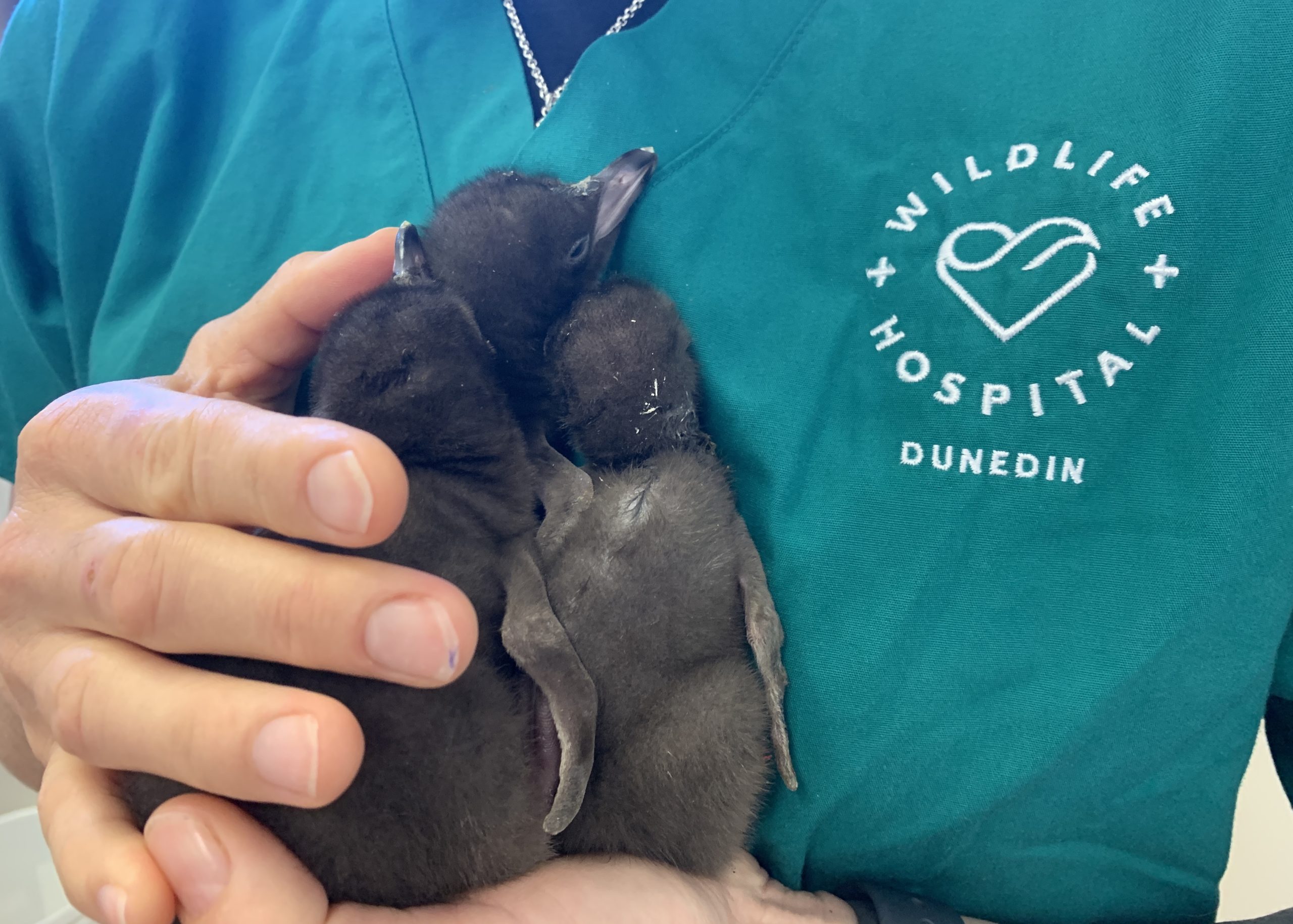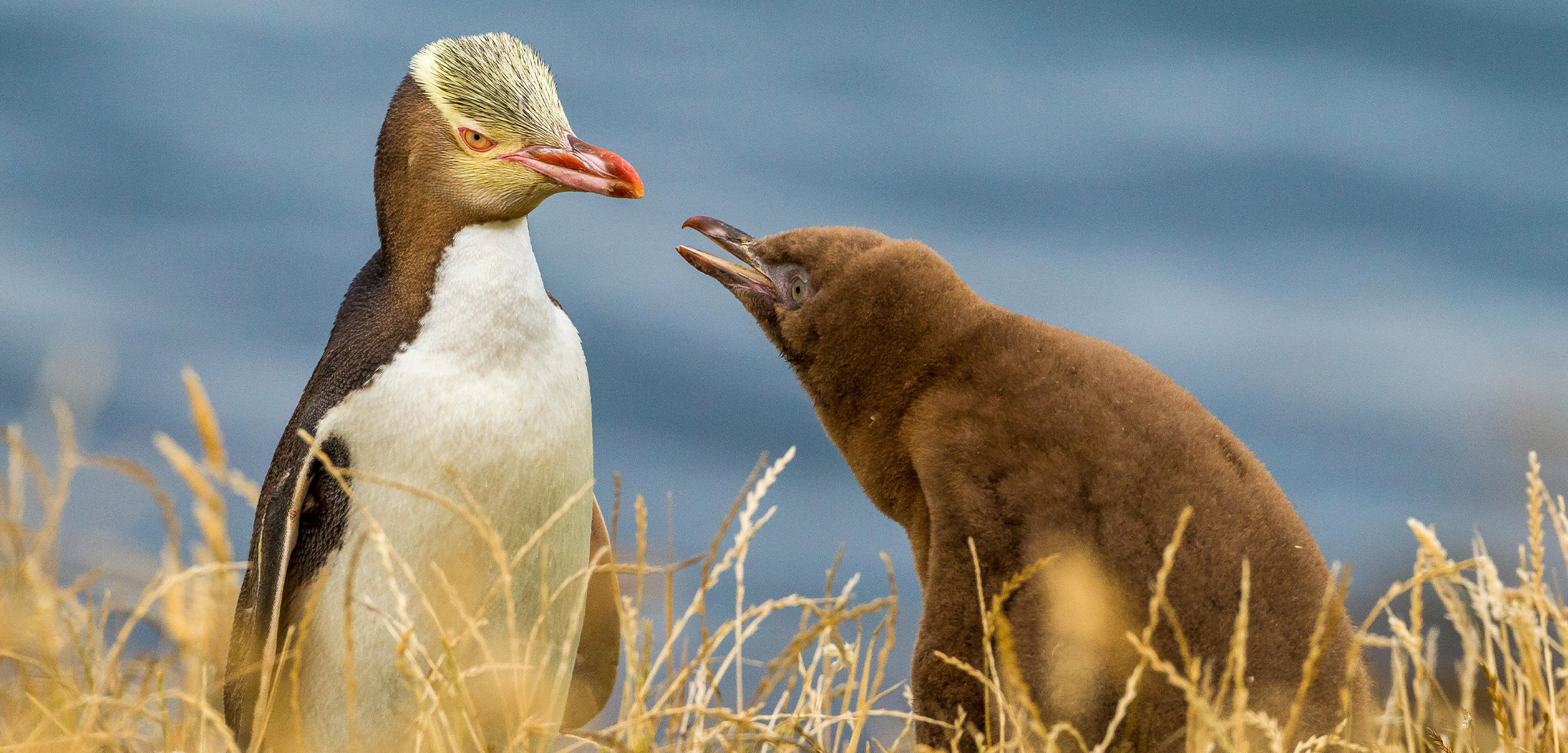What’s Killing Baby Yellow-Eyed Penguins?
Scientists in New Zealand have discovered two new viruses—prime suspects for what’s causing a pair of lethal diseases plaguing the endangered birds.
Article body copy
The mystery illness first showed up in November 2019. Conservation rangers started bringing newly hatched yellow-eyed penguins into the wildlife hospital in Dunedin, New Zealand. The chicks were days old, just a handful of dark-gray fluff, and they were in a bad way.
“They were gasping, really struggling to breathe,” says the hospital’s director, veterinarian Lisa Argilla. “Everything we threw at them to try and save them—oxygen, medication—nothing worked.” Every single chick with respiratory symptoms died. Afterward, when the vets cut them open, the penguins’ lungs were abnormally dark and riddled with blood clots. In 2020 and 2021, nearly one-quarter of the yellow-eyed penguin chicks born on mainland New Zealand died from the disease.
Yellow-eyed penguins, usually called by their Māori name, hoiho, can’t afford such drastic losses. There are two genetically distinct populations: an estimated 1,000 breeding pairs thriving in New Zealand’s remote subantarctic islands and roughly 190 pairs in the South Island and Rakiura (Stewart Island). In the past 30 years, the smaller population has declined by 75 percent. The cause is a whole gamut of dangers including predation by dogs, cats, stoats, and ferrets, entanglement in commercial gill nets, food shortages, and infectious diseases: diphtheritic stomatitis and avian malaria, plus the new respiratory illness.
Identifying this new illness was an urgent priority, says the University of Otago’s Jemma Geoghegan, an evolutionary virologist who also worked on New Zealand’s COVID-19 response. After the devastating 2020 breeding season, Geoghegan joined forces with a dozen other scientists, vets, and conservationists to investigate.
The team took tissue samples from 43 chicks that died during the following breeding season, extracted genetic material, then employed the same techniques that were used to identify SARS-CoV-2, the coronavirus that causes COVID-19.

Vets at the wildlife hospital in Dunedin, New Zealand, remove yellow-eyed penguin, or hoiho, chicks from their nests at three to four days old and hand raise them to prevent the birds contracting a lethal respiratory illness. Photo courtesy of Dunedin Wildlife Hospital
“When animals, especially endangered ones, get sick we used to have very few clues as to what type of microbe was behind it,” says Michael Bunce, the chief science adviser for New Zealand’s Department of Conservation who was not involved in the research. New genetic techniques have changed this, he says, by generating a list of possible pathogens in a tissue sample. Each suspect can then be investigated more fully, he says.
Samples from 34 chicks contained the genetic signature of a novel gyrovirus—a relative of chicken anemia virus, which causes disease in poultry chicks. “It was highly abundant in the tissues, and there were no other potential pathogens,” Geoghegan says. The researchers concluded that the gyrovirus is very likely associated with the respiratory disease plaguing the penguins.
Scientists still need to conclusively prove that the virus triggers the respiratory disease on its own, Bunce says, as other factors could contribute to causing the illness.
Geoghegan’s team has since used the same technique to identify another new virus, a type of megrivirus that they think is behind one of the other illnesses affecting hoiho. Diphtheritic stomatitis was first identified in 2002, and scientists have been trying to pin down the virus responsible ever since. It causes painful oral lesions in slightly older chicks, which can lead to infections and starvation. (That study was published as a preprint in July 2023.)
The researchers are now investigating whether medications or other interventions could help the chicks survive the respiratory illness.
In the United States, for example, federal officials recently authorized the immunization of California condors after 13 of the highly endangered raptors died from the H5N1 bird flu. And the poultry industry regularly vaccinates chickens against chicken anemia virus.
The first step in developing any vaccine for hoiho, Geoghegan says, is to consult with Māori—the species is considered a taonga, or treasure. “But given that there is a vaccine that’s really effective against [the closely related chicken anemia virus], I think it’s quite a good path to go down if everyone agrees.”
In the meantime, the team is working together to save as many penguins as possible. The scientists are investigating how the disease progresses and is transmitted. Gyroviruses cling to surfaces, so rangers need to be careful not to spread the virus between hoiho nests.
At the wildlife hospital, the vets have found that if they remove all hoiho chicks from their nests at three to four days old and hand raise them, they can treat any oral lesions from diphtheritic stomatitis—and crucially, the chicks don’t develop the new respiratory disease. After a little over a week, the tiny chicks are safely returned to their parents, who continue to raise them in the wild.
“We can hopefully slow the decline, while other solutions are found,” Argilla says. “Fingers crossed, because they are definitely marching towards extinction.”

